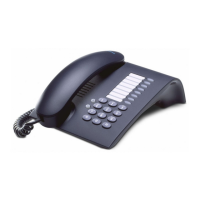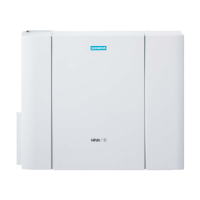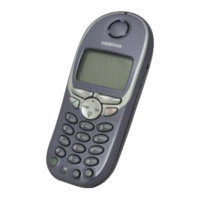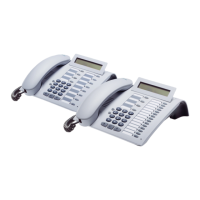Call management (CM)
Initial operation
A31003-K16-X001-3-7620
,
07/99
6-6
Hicom 100 E Version 2.1, Service manual
6.9 Call management (CM)
Call management (CM) serves to configure how incoming calls are to be handled in
accordance with line type and day/night service.
First, here is a simple overview:
An extension number is assigned to an analogue trunk (menu item – Call allocation line day,
code 15 17 and Call allocation line night, code 15 18). A call destination list is then assigned to
the extension number (menu item Call destination lists day/night, code 15 191/15 19 2) and,
finally, call management is programmed in this list.
6.9.1 Call allocation
Each of the different call allocations (day, night, internal) is processed with its own CM string.
With call allocation, the 32 possible analogue trunks are assigned internal extension numbers.
Call allocation can only be changed (diverging from the default setting) by changing the call
destination list (menu item Call destination list, code 15 191), see Figure 6-4.
6.9.2 Reference to call destination lists
There are different references with the same layout that each contain:
64 entry options (default 11–74) for extension numbers and
8 entry options (default 881–888) for group ringing/hunting groups.
References to the following destination lists are specified as standard (as of SW 2.0.1+):
●
External calls during the day refer to the call destination list 14
●
External calls during the night refer to the call destination list 15
●
Internal calls refer to the call destination list 16.
This means that in many cases (especially in the case of night service), the call allocation can
only be changed by changing the reference, see Figure 6-5.
6.9.3 Call destination lists
The following CM list elements can be programmed individually in 16 call destination lists
(Figure 6-6):
Entry 1–4 one cell each for processing the actual calls,
Entry 5 one cell for defining the call diversion time for cells 1–4.
Entry 6 one cell for forwarding handling common ringer.
Entry 7 one cell for connection type of common ringer or secondary telephone.

